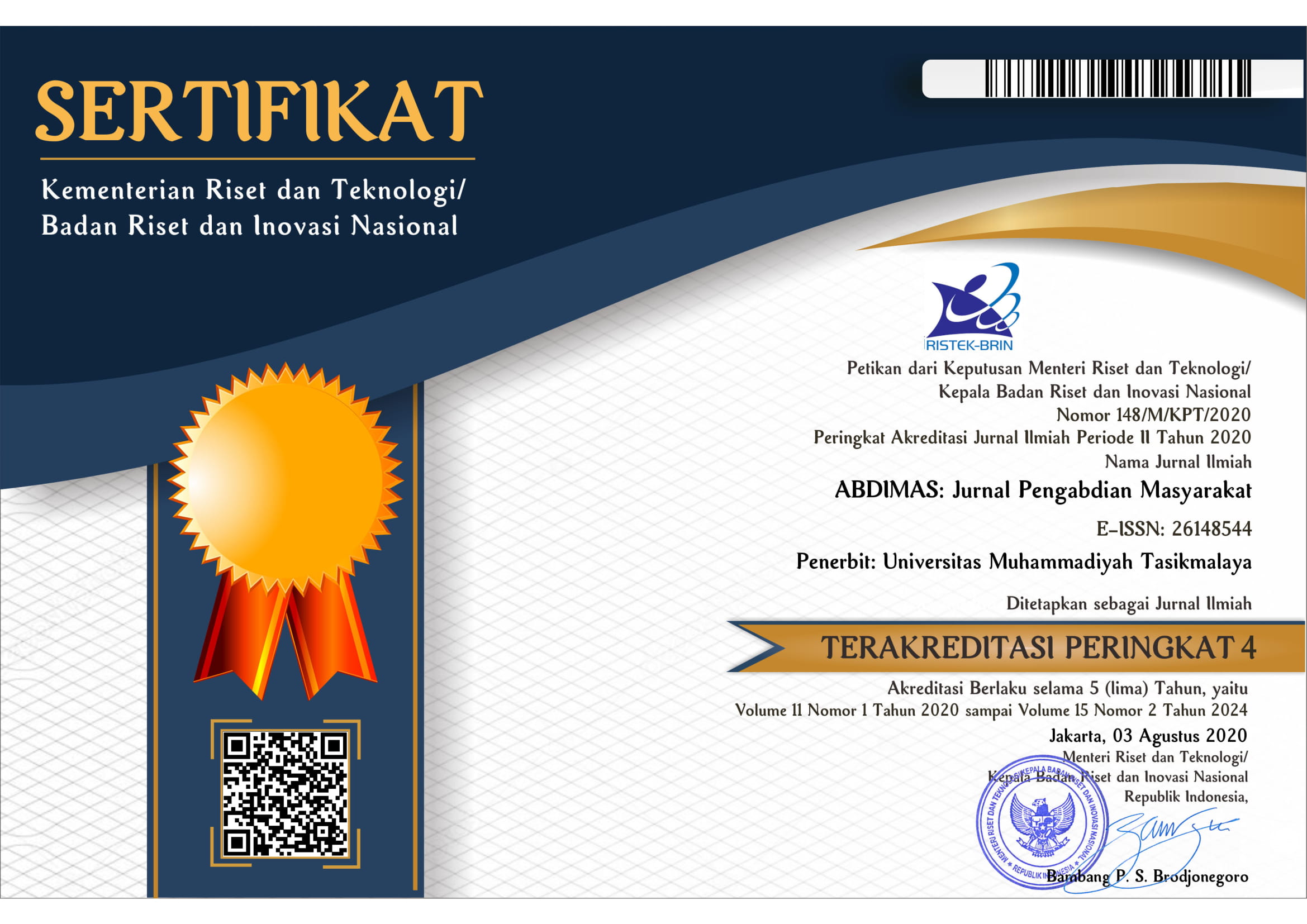Prevention of Dengue Hemorrhagic Fever (DHF) by Planting Lemongrass at SMK 17 Agustus 1945 Surabaya
DOI:
https://doi.org/10.35568/abdimas.v4i2.1310Keywords:
the danger of dengue fever, lemongrass plantingAbstract
Dengue Hemorrhagic Fever (DHF) is a disease caused by the dengue virus which is transmitted through the bite of the Aedes aegypti and Aedes albopictus mosquitoes. Dengue Hemorrhagic Fever (DHF) is caused by the dengue virus and is transmitted by the Aedes aegypti mosquito, which is characterized by a sudden fever of two to seven days without a clear cause, weakness or lethargy, restlessness, heartburn accompanied by signs of bleeding on the skin in the form of bleeding spots, bruising or rashes. sometimes nosebleeds, bloody stools, vomiting blood, decreased consciousness or shock. This PKM aims to provide detailed information about DHF and how to prevent DHF using lemon grass. After participating in this lesson, participants are expected to be able to understand what dengue is, the benefits of lemongrass and know how to plant lemongrass in their neighborhood. The method used in this research is to conduct counseling and distribute pretest and posttest. The results show that this community service program can increase students' knowledge by 64.3% related to the dangers of dengue fever, the benefits of lemongrass as a mosquito repellent plant and how to plant lemongrass correctly.
Downloads
References
Agriesta, D. (2021). 408 Kasus Demam Berdarah Tercatat di Jatim Selama Januari, 4 di Antaranya Meninggal. Kompas.Com. https://regional.kompas.com/read/2021/02/10/20254601/408-kasus-demam-berdarah-tercatat-di-jatim-selama-januari-4-di-antaranya
Boateng, B. A. (2008). Toksisitas Jatropha Seed Oil untuk Callosobruchus maculatus dan Perusahaan Parasitoid, Basalis Dinarmus. Journal of Applied Sciences, 4(8), 945–951.
Candra, A. (2010). Demam Berdarah Dengue: Epidemiologi, Patogenesis, dan Faktor Risiko Penularan. ASPIRATOR - Journal of Vector-Borne Disease Studies, 2(2). http://ejournal2.litbang.kemkes.go.id/index.php/aspirator/article/view/1787
Healy, B. F. (2006). ABC of Wound Healing: Infections. BMJ, 332, 838.
Kesehatan, K. (2018). Pusat Data dan Informasi - Kementerian Kesehatan Republik Indonesia. Kementrian Kesehatan RI. https://pusdatin.kemkes.go.id/article/view/19010400002/situasi-demam-berdarah-dengue-di-indonesia.html
Setiyawan, H., Lestari, A. S., Ayuningtyas, E. N., Meradji, A., Diana, E., & Utami, E. B. (2019). Penyuluhan Demam Berdarah Dengue (Dbd) Dan Tanaman Pengusir Nyamuk Di Desa Modalan, Banguntapan. Jurnal Pemberdayaan: Publikasi Hasil Pengabdian Kepada Masyarakat, 3(2), 241. https://doi.org/10.12928/jp.v3i2.849
Supartha, I. W. (2008). Pengendalian Terpadu Vektor VirusDemam Berdarah Dengue, Aedes aegypti(Linn.) dan Aedes albopictus(Skuse)(Diptera: Culicidae). Seminar DiesUnud2008.
Wardani, S. (2009). Uji Aktivitas Minyak Atsiri Daun dan Batang Serai (Andropogon Nardus L) sebagai Obat Nyamuk Elektrik Terhadap Nyamuk Aedes Aegypti. Pusat Studi Farmasi UMS, 1–60.














